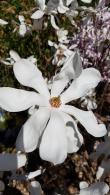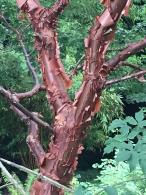Newsletter Sign up
Get Additional 5% Off 1st Order
Get Additional 5% Off 1st Order
(up to a maximum saving of £50)
Hamamelis Mollis - Chinese Witch Hazel
To Get A Delivery Price:
1. Add items to basket
2. Go to the basket
3. Enter your postcode in Delivery Price Check
1. Add items to basket
2. Go to the basket
3. Enter your postcode in Delivery Price Check
Available Sizes to buy online
All Prices Include VAT
LIMITED STOCK only 2 available
- then no more stock of this size


Height Excluding Pot:
50-60cm
(1ft 7-1ft 11)
Pot size: 7.5 Litres
Plant ID: 10023 C 1
click to view this plant size >Was £85.00
25% Off - Now £63.75
Height Excluding Pot:
1.25-1.5m
(4ft 1-4ft 11)
Pot size: 18 Litres
Plant ID: 1152 C 64
click to view this plant size >Was £214.50
25% Off - Now £160.88LIMITED STOCK only 2 available
- then no more stock of this size


Hamamelis Mollis is commonly known as Chinese Witch Hazel is an interesting winter flowering shrub, displaying beautiful bright yellow flowers which have the sweetest scent between December and February. During the autumn the foliage changes colour to yellows, oranges and reds before losing its leaves and the preparation for winter flowering. It is a beautiful sight in the garden at a time when there are few other plants blooming. Chinese Witch Hazel is a hardy shrub and prefers full sun or partial shade and should be sheltered from cold winds especially when blooming. To encourage prolific flowering, choose a sunny spot with moist, organically rich, deep soil.
Adaptable and robust, this deciduous shrub thrives in areas where winter temperatures don’t go below -15 degrees, and it’s fully hardy in Britain and Ireland. Easy to grow and to care for, Hamamelis Mollis is generally pest and disease free. Its upright, rounded habit doesn’t require extensive care to stay in shape. Apart from removing any dead, damaged or unwanted shoots, there’s not much to do to maintain the perfect form of this highly decorative cultivar. Considered a medium-sized shrub, Chinese Witch Hazel grows to be circa 2.5 to 4 metres high and across.
Hamamelis Mollis has been awarded the RHS Award of Garden Merit - a good indicator of a plant that performs well. Its bright yellow, winter blossoms are considered to be the most fragrant amongst witch hazel varieties, and, as such, attract many pollinators- hence the RHS Perfect for Pollinators Badge this cultivar won.
Although this ornamental shrub offers multiple seasons of interest, Hamamelis Mollis is the perfect candidate for striking winter gardens. Grown for its spectacular autumn colour and winter flowering season, Chinese Witch Hazel can be used as a specimen plant or planted in mixed shrub borders. Pair this cultivar with shrubs that have a winter interest, such as colourful dogwood varieties, the gorgeous February Daphne or the unusual Arbutus Unedo.
Adaptable and robust, this deciduous shrub thrives in areas where winter temperatures don’t go below -15 degrees, and it’s fully hardy in Britain and Ireland. Easy to grow and to care for, Hamamelis Mollis is generally pest and disease free. Its upright, rounded habit doesn’t require extensive care to stay in shape. Apart from removing any dead, damaged or unwanted shoots, there’s not much to do to maintain the perfect form of this highly decorative cultivar. Considered a medium-sized shrub, Chinese Witch Hazel grows to be circa 2.5 to 4 metres high and across.
Hamamelis Mollis has been awarded the RHS Award of Garden Merit - a good indicator of a plant that performs well. Its bright yellow, winter blossoms are considered to be the most fragrant amongst witch hazel varieties, and, as such, attract many pollinators- hence the RHS Perfect for Pollinators Badge this cultivar won.
Although this ornamental shrub offers multiple seasons of interest, Hamamelis Mollis is the perfect candidate for striking winter gardens. Grown for its spectacular autumn colour and winter flowering season, Chinese Witch Hazel can be used as a specimen plant or planted in mixed shrub borders. Pair this cultivar with shrubs that have a winter interest, such as colourful dogwood varieties, the gorgeous February Daphne or the unusual Arbutus Unedo.
















